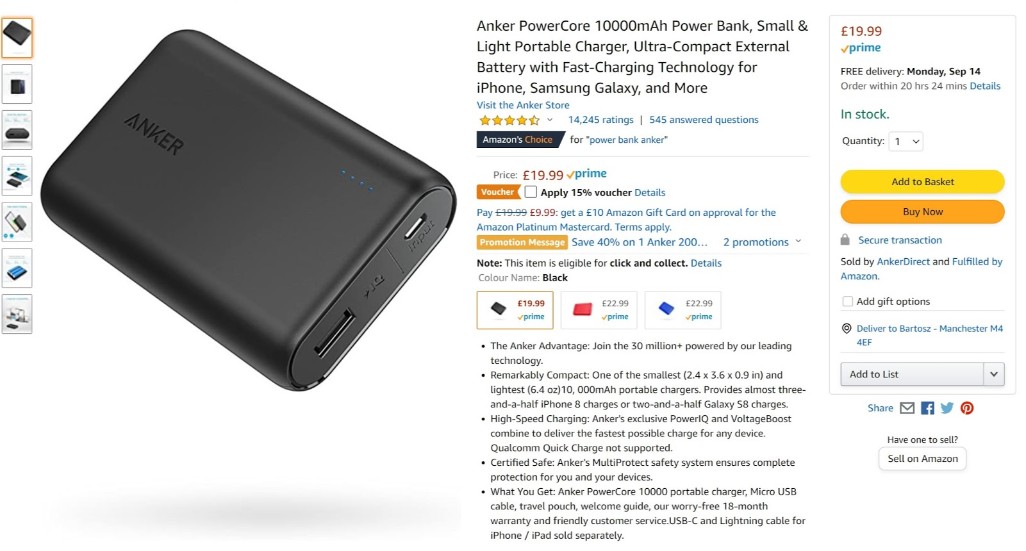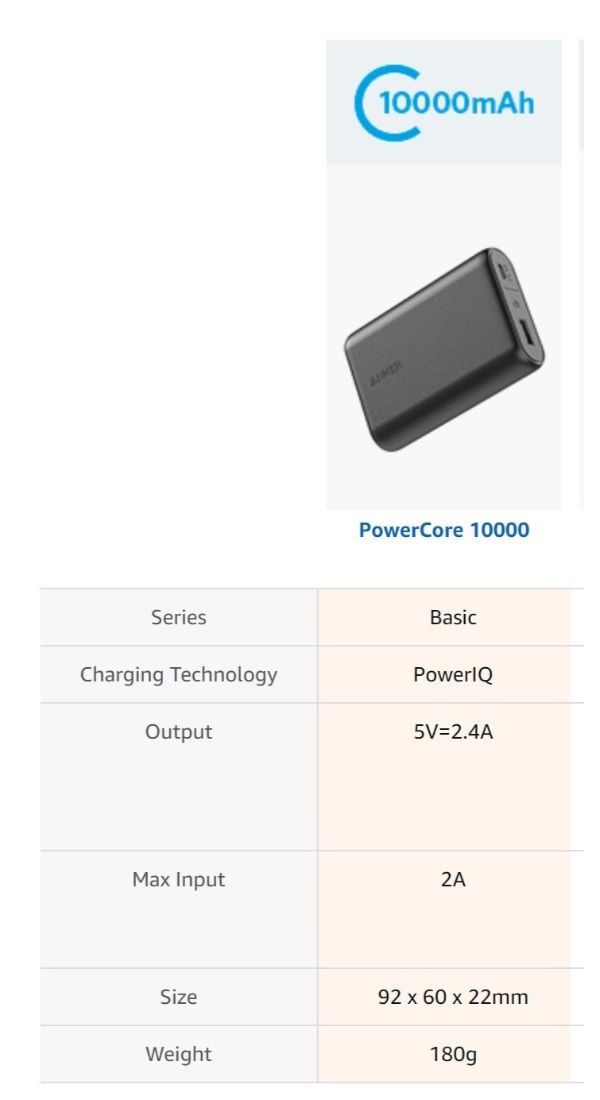What Do mAh, Amps, Voltage Mean on a Battery? Complete Guide to Charging Terminology
mAh, Voltage, Amps, Watts, and many more. What do they mean? Charging terminology might be very daunting at first. However, once you know their meaning, buying a power bank or a charger will not be a random purchase but a confident acquisition. In this article, you will learn the essential charging terms - in plain English.
What Does mAh Mean on a Battery?
mAh is an acronym for Milliamp Hour. It is the main unit that describes the capacity of a battery. Essentially, whenever you search for a power bank, mAh will be one of the first things you see, along with the brand’s name.
As a rule of thumb - the more mAh a power bank has, the more times your electric device, such as a mobile phone, can be charged.
Example:
If you own an iPhone 8, which battery capacity is 1,821mAh, and you
purchase Anker PowerCore 5000 with a 5,000mAh battery, you will be able to
charge your phone twice. You might think, “hold on, the power bank should
charge my phone at least two and a half times, right?” And that is one of
the most common misconceptions - the power bank’s actual capacity is
smaller than advertised due to energy losses and battery efficiency -
usually two-thirds of it.
What Does Voltage Mean on a Battery or a Charger?
In plain English: voltage makes an electric charge move from one end of the path to another . It still might not say much to you, but voltage and mAh are strongly correlated with energy losses mentioned in the previous chapter.
In relation to mAh, voltage refers to stability. Typically, power banks have 3.7V batteries. Whereas, USB standard is 5V. When a battery with a lower voltage of 3.7V is connected to a USB device with a higher voltage of 5V, it must convert mAh. It causes energy loss. And this is the reason why a 5,000mAh battery won’t charge exactly 5,000mAh of another battery.
Luckily, you don’t have to be a mathematical genius to calculate the
so-called “
Real Battery Capacity.” More about it, you can find in
this article. Just use the equation:
.jpg?alt=media&token=a6c75f8d-73e6-4a02-a8a2-d7ae6c4608aa)
Example:
.jpg?alt=media&token=5731ed11-68cb-42b1-9188-4a4ef95686af)
And there it is; this is the real battery capacity. As long as your power bank is in perfect condition, you will have 7,400 mAh to use.
Why don’t manufacturers advertise this number instead? Most people use power banks to charge their mobile phones after all, right? The answer is simple: marketing. Potential buyers know that the higher mAh of a battery, it’s bigger capacity, so more charged phones.
Luckily you are still reading this article, and now you are aware of it.
A lesson to learn: you can use roughly ⅔ of an advertised battery capacity to charge your devices.
What Does Amps Mean on a Battery or a Charger?
The amps are the maximum amount of power it can supply. In other words, the amperage is like the energy rate that is taken to the charged device. Amps refer both to output and input charging.
The bottom line - more amps have a charger or a power bank; you can charge your device faster.
Bear in mind, some devices need a minimum amount of amps to get charged. Check your device before purchasing a power bank or a charger to be sure that they are compatible.
Assuming the same voltage, compare 0.5-amp, a 1-amp, and 2-amps charger to a one-lane, a two-lane, or a three-lane highway. The throughput of a three-lane highway is the highest - the same with 2-amps.
Many manufacturers include a 1.0A chargers with their smartphones.
Since the charging technology has been improving, some producers include 2.0A or 2.1A chargers. It allows charging a mobile device quickly without harming phones on extensive heating and power loss.
If you come across a charger or a power bank with 3.0A, this goes into the category of Quick Charge. They are frequently used in mobile phones with high battery capacity.
What Does Output Mean on a Battery or a Charger?
The output of a power bank or a charger is the maximum power that it can provide to a device.
Example: Power Bank Anker PowerCore 10000 has the output of 5V/2.4A
How to understand these numbers if you are charging your phone? It means that your smartphone is charging at 5 Volts and 2.4 Amps.
What Does Input Mean on a Battery or a Charger?
The input of a power bank or a charger is the maximum power it will receive during the charging.
Example: 5V/2A
What does it mean for your power bank? It means that your power bank is charged at 5 Volts and 2 Amps. Input only refers to a power bank, since a charger can’t be charged.
Let’s Analyse An Example Power Bank
The best way to understand gained knowledge is to put it into practice. Let’s take a closer look at an example: Power Bank Anker PowerCore 10000 mAh .
This is one of the most popular power banks on the market.

The title provides essential information about the power bank. You can see the brand and the name of the model.
On the right after, you can see the key information - 10,000mAh. As mentioned in the article, this is not the real battery capacity. The real capacity is roughly ⅔ of it. Therefore if you have Samsung Galaxy S8, it should be charged fully twice and maybe 30% on the third attempt.
We also know what the power bank has. The vital information is that USB-C and iPhone cable are not included, so you must purchase these separately.

The charging technology - PowerIQ is exclusive fast-charging technology created by Anker. It guarantees to charge a device on level 2.4A, which is still the fast-charging technology.
The maximum input tells you that the power bank is charged at 2.0A, a standard for power banks.
Size and weight are also important, especially if you are looking for a compact and light power bank. This one is one of the lightest and smallest 10,000mAh power bank on the market.
To Wrap-Up
Buying a power bank or a charger can be a daunting experience if you don’t know the terminology. However, now you know what mAh, Voltage, Amps, and Input & Output mean, so you can purchase a power bank or/and a charger with full confidence.